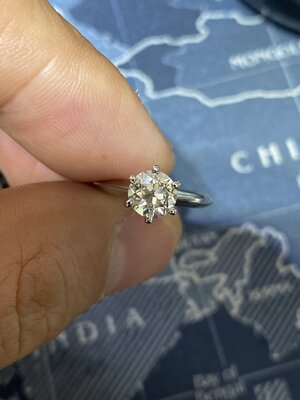Sparkling Diamond Eyes
Rough_Rock
- Joined
- Oct 8, 2021
- Messages
- 7
A great custom made ring comes with the inside of the head, not just the prongs, already polished prior to setting the gem. Since many rings are made with CAD and and then waxes are created, the better houses cast in two or more pieces and then polish each piece, inside and out, before assembling the jewel.
Perhaps @Victor Canera, or one of the other companies that work with hand drawn pieces, could come to this thread and talk about their process with polish. I would be very surprised if their pieces are not polished inside and out prior to the mounting of the gems.
Most buyers are not aware of the amount of time it takes to bestow a truly top quality polish. A top of the line piece may easily require ten to fifteen hours of polish to provide the breathtaking mirror like finish desired for the presentation to the final recipient.
I felt it was important for me to teach my clients NOT to touch the final ring until it was presented to the person for whom it was made. I was criticized more than once for wearing my "horrible" looking gloves during the videos I made for our clients. I wore them because no one in my staff ever touched a clients ring prior to delivery with bare hands.
Wink
The worse the cut the more advantage.
It works well for many colored gems because they have more window effect.
It works for fancy yellow diamonds with a yellow cup because about 1/3rd of the light in well cut fancies leaks out the back.

not really in my opinion, there is not a lot of leakage, its mostly obstruction and the culet is not super huge.
I was absolutely stunned to learn that the polishers study three years!
It’s important to get at least a decent polish on the interior areas of a piece of fine jewelry. Not only does it add some luster from certain odd viewing angles, but it also helps prevent buildup of dirt which can be hard to remove. Not to mention that it is an indicator of overall craftsmanship.
We get parts and finished pieces from a variety of suppliers. Most are pre-polished, either by hand or by an ultrasonic tumbler. Many require little or no additional polishing to interior areas. The big exception is rough castings which have to be thoroughly filed and polished using a variety of tools and techniques.
One interesting “old school” technique to get a polish on an interior piece that otherwise cannot be reached by wheels or brushes is “string” polishing. This ultra low-tech method is actually indispensable in certain situations. The jeweler fastens a piece of cotton string to the bench, rubs polishing compound on it, and feeds the string through an opening in the piece. While keeping the string taught with one hand he runs the jewelry piece up and down it with the other, getting a polish on otherwise unreachable areas.


Do the jewelers in this group agree?
Not technically a Jeweler but I agree that they look correct.Do the jewelers in this group agree?